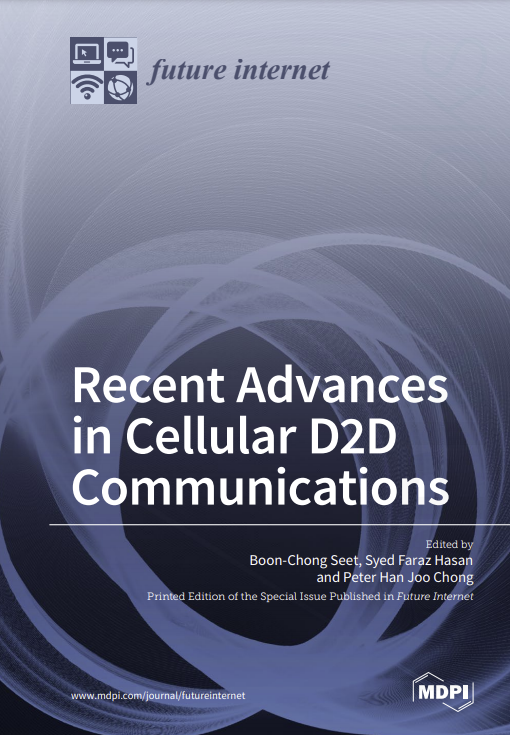Recent Advances in Cellular D2D Communications
Editorial: MDPI
Licencia: Creative Commons (by-nc-nd)
Autor(es): Seet, Boon-Chong; [et al.]
Device-to-device (D2D) communications have attracted a great deal of attention from researchers in recent years. It is a promising technique for offloading local traffic from cellular base stations by allowing local devices, in physical proximity, to communicate directly with each other. Furthermore, the resulting short-range communications can enable local devices to realize higher data rates, lower communication latency, and reduced power consumption. Through relaying, D2D is also a promising approach to enhancing service coverage, particularly at cell edges or in black spots within the cell. In addition to improving network performance and service quality, D2D can open up opportunities for new proximity-based services and applications for cellular users.
However, there are many challenges to realizing the full benefits of D2D. For one, minimizing the interference between legacy cellular and D2D users, operating in underlay mode, is still an active research issue. With 5G expected to be the main carrier for IoT traffic, the potential role of D2D and its scalability to support massive IoT devices and their machine-centric (as opposed to human-centric) communications need to be investigated. New challenges have also arisen from new enabling technologies for D2D communications, such as millimeter-wave and massive MIMO (multiple-input and multiple-output) systems, which call for new solutions to be proposed. The aforementioned matters are just a few examples of the many challenges that remain to be addressed.
[Suiza: 2018]
Compartir:
Una vez que el usuario haya visto al menos un documento, este fragmento será visible.


